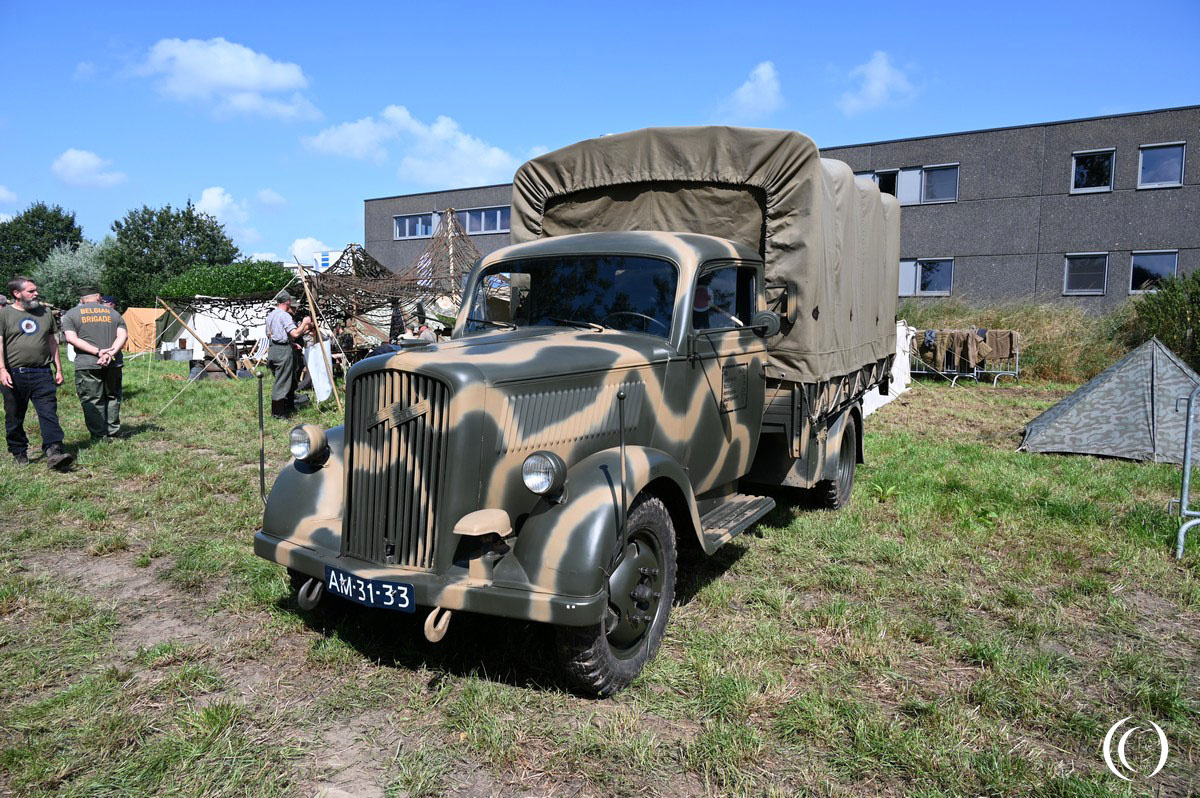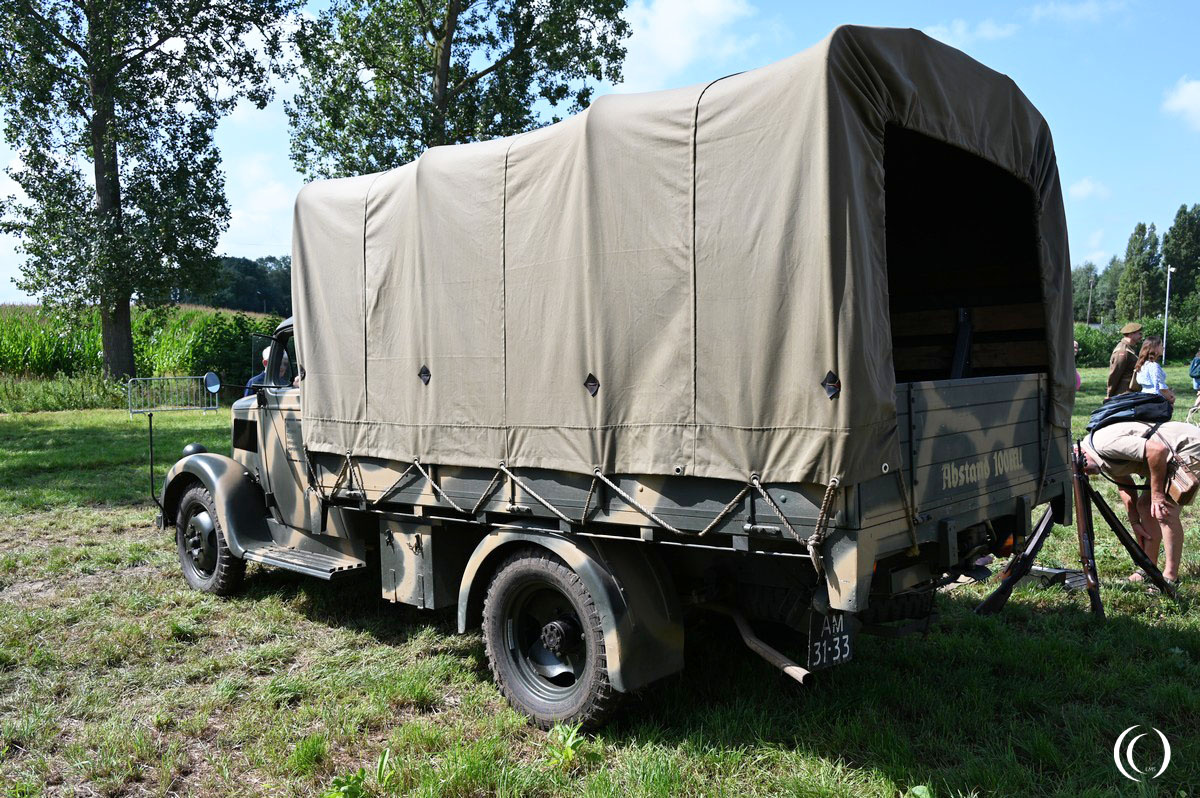
Opel was already an important supplier of military vehicles in the First World War. From 1930, Opel built light and medium-duty trucks. The successful Opel Blitz (Eng. Bliksem) came onto the market in 1936, it was a light truck with a 3-ton loading weight. In 1933 the same year the National Socialist party came to power, which brought with it a huge expansion of the military tropical movement. In 1935, a new factory was built in Brandenburg that could produce 150 vehicles per day.





From the start there were two variants of the Opel Blitz, a personnel transport vehicle and a flatbed transport truck.
Much variation was added during the Second World War. An Opel Blitz with a simplified platform housing was manufactured, a radio truck, a tanker for water or petrol, a field workshop, an Opel Blitz with a 2cm FLaK 38 as an anti-aircraft truck and even a half-track variant Maultier (English mule) was developed and a armored truck specialised for a rocket launcher.
When Mercedes had to stop production of their Mercedes L 3000 truck, they were commissioned to make the Opel Blitz 3.6 under license. They made another 1500 trucks for the German army.





Several variants of the Opel Blitz were made. There was a lighter version, the 1.5 Type 35 with a payload of 1500 kilograms. The Opel Blitz 2 as a half-track – Maultier Sd.Kfz. 3a or the Opel Blitz 2 MunKfz (Sd.Kfz.4) Munitionskraftwagen für Nebelwerfer Sd.Kfz. 4 a modernized variant for the nebelwerfer.
The Opel Blitz 3 Type 36 and the Type 42. Also the Opel Blitz 3 Type 47 with a low frame (bus chassis), and the Opel Blitz 3 Type 6700A with four-wheel drive.Approximately 134,000 Opel Blitz trucks in all variants were made.


The Opel Blitz 3.6-36S was powered by a 6 cylinder engine with 68 HP and had a top speed of 85 km/h. The Opel Blitz had an effective range of 320 kilometers. Production of the Opel Blitz continued until 1975.